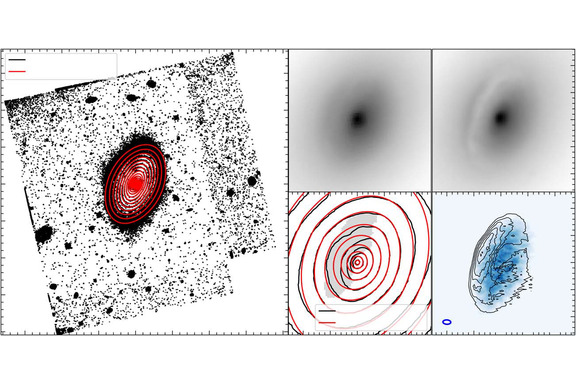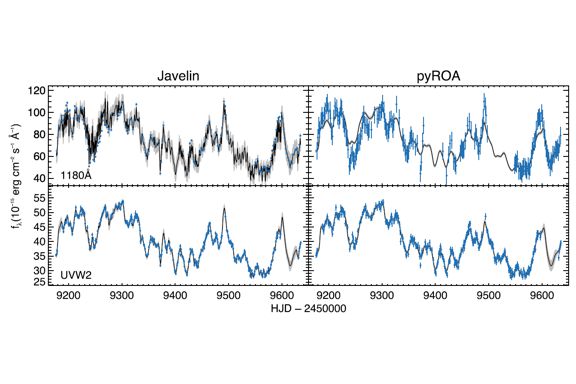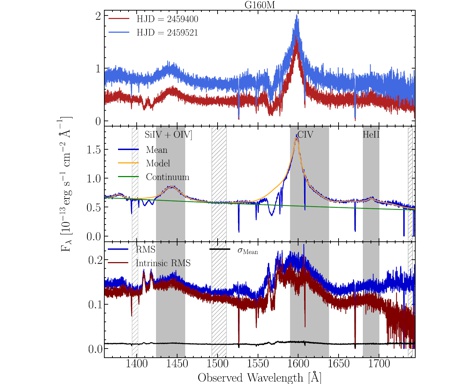BYU Astronomy Research Group Joins the Astrophysical Research Consortium (ARC)
As of January 2021 BYU will be a member of the ARC Consortium (Link to Consortium) with access to the ARC 3.5-m telescope and the 0.5-m ARCSAT telescope. The primary use of the ARC 3.5-m telescope time is for graduate student projects. This provides a wide array of instrumentation that is currently being used to study objects in the solar system all the way to studies of the large scale structure of the Universe.
Other BYU Astronomy Facilities
In addition to our telescope time from the ARC consortium, we operate a number of our own astronomical facilities
West Mountain Observatory (West Mountain)
This is our mountain observatory at about 6600 ft above sea level. This consists of three telescopes: 0.9-m, 0.5-m, and a 0.32-m. It is a 40 minute drive that ends in a 5 miles drive up a dirt road. The mountain itself can be seen from campus. We don't provide any tours of this facility.
Orson Pratt Observatory
The Orson Pratt Observatory is named for an early apostle of the Church of Jesus Christ of Latter-Day Saints. It is our campus telescope facility and contains a wide variety of telescopes for student research and public outreach. We operate a 24" PlaneWave telescope in the main campus dome, plus a 16", two 12", one 8", and a 6" telescope on our observation deck. The telescopes are all fully robotic. Beyond this we have a large sections of telescopes used on public nights.
Royden G. Derrick Planetarium (Planetarium)
This is a 119 seat, 39" dome planetarium with acoustically treated walls to allow it's use as a lecture room. Recently we upgraded to an E&S Digistar7 operating system with 4K projectors. The planetarium is used for teaching classes, public outreach, and astronomy education research projects.
Selected Publications

Dusty circumnuclear disks (CNDs) in luminous early-type galaxies (ETGs) show regular, dynamically cold molecular gas kinematics. For a growing number of ETGs, Atacama Large Millimeter/sub-millimeter Array (ALMA) CO imaging and detailed gas-dynamical modeling facilitate moderate-to-high precision black hole (BH) mass (M BH) determinations. From the ALMA archive, we identified a subset of 26 ETGs with estimated M BH/M circle dot greater than or similar to 108 to a few x 109 and clean CO kinematics but that previously did not have sufficiently high-angular-resolution near-IR observations to mitigate dust obscuration when constructing stellar luminosity models. We present new optical and near-IR Hubble Space Telescope (HST) images of this sample to supplement the archival HST data, detailing the sample properties and data-analysis techniques. After masking the most apparent dust features, we measure stellar surface-brightness profiles and model the luminosities using the multi-Gaussian expansion (MGE) formalism. Some of these MGEs have already been used in CO dynamical modeling efforts to secure quality M BH determinations, and the remaining ETG targets here are expected to significantly improve the high-mass end of the current BH census, facilitating new scrutiny of local BH mass-host galaxy scaling relationships. We also explore stellar isophotal behavior and general dust properties, finding these CNDs generally become optically thick in the near-IR (A H greater than or similar to 1 mag). These CNDs are typically well aligned with the larger-scale stellar photometric axes, with a few notable exceptions. Uncertain dust impact on the MGE often dominates the BH mass error budget, so extensions of this work will focus on constraining CND dust attenuation.

An intensive reverberation mapping campaign of the Seyfert 1 galaxy Mrk 817 using the Cosmic Origins Spectrograph on the Hubble Space Telescope revealed significant variations in the response of broad UV emission lines to fluctuations in the continuum emission. The response of the prominent UV emission lines changes over an similar to 60 day duration, resulting in distinctly different time lags in the various segments of the light curve over the 14 month observing campaign. One-dimensional echo-mapping models fit these variations if a slowly varying background is included for each emission line. These variations are more evident in the C iv light curve, which is the line least affected by intrinsic absorption in Mrk 817 and least blended with neighboring emission lines. We identify five temporal windows with a distinct emission-line response, and measure their corresponding time delays, which range from 2 to 13 days. These temporal windows are plausibly linked to changes in the UV and X-ray obscuration occurring during these same intervals. The shortest time lags occur during periods with diminishing obscuration, whereas the longest lags occur during periods with rising obscuration. We propose that the obscuring outflow shields the broad UV lines from the ionizing continuum. The resulting change in the spectral energy distribution of the ionizing continuum, as seen by clouds at a range of distances from the nucleus, is responsible for the changes in the line response.

We present 0.'' 22-resolution Atacama Large Millimeter/submillimeter Array (ALMA) observations of CO(2-1) emission from the circumnuclear gas disk in the red nugget relic galaxy PGC 11179. The disk shows regular rotation, with projected velocities near the center of 400 km s-1. We assume the CO emission originates from a dynamically cold, thin disk and fit gas-dynamical models directly to the ALMA data. In addition, we explore systematic uncertainties by testing the impacts of various model assumptions on our results. The supermassive black hole (BH) mass (M BH) is measured to be M BH = (1.91 +/- 0.04 [1 sigma statistical] -0.51+0.11 [systematic]) x 109 M circle dot, and the H-band stellar mass-to-light ratio M/L H = 1.620 +/- 0.004 [1 sigma statistical] -0.107+0.211 [systematic] M circle dot/L circle dot. This M BH is consistent with the BH mass-stellar velocity dispersion relation but over-massive compared to the BH mass-bulge luminosity relation by a factor of 3.7. PGC 11179 is part of a sample of local compact early-type galaxies that are plausible relics of z similar to 2 red nuggets, and its behavior relative to the scaling relations echoes that of three relic galaxy BHs previously measured with stellar dynamics. These over-massive BHs could suggest that BHs gain most of their mass before their host galaxies do. However, our results could also be explained by greater intrinsic scatter at the high-mass end of the scaling relations, or by systematic differences in gas- and stellar-dynamical methods. Additional M BH measurements in the sample, including independent cross-checks between molecular gas- and stellar-dynamical methods, will advance our understanding of the co-evolution of BHs and their host galaxies.

The AGN STORM 2 campaign is a large, multiwavelength reverberation mapping project designed to trace out the structure of Mrk 817 from the inner accretion disk to the broad emission line region and out to the dusty torus. As part of this campaign, Swift performed daily monitoring of Mrk 817 for approximately 15 months, obtaining observations in X-rays and six UV/optical filters. The X-ray monitoring shows that Mrk 817 was in a significantly fainter state than in previous observations, with only a brief flare where it reached prior flux levels. The X-ray spectrum is heavily obscured. The UV/optical light curves show significant variability throughout the campaign and are well correlated with one another, but uncorrelated with the X-rays. Combining the Swift UV/optical light curves with Hubble Space Telescope UV continuum light curves, we measure interband continuum lags, tau(lambda), that increase with increasing wavelength roughly following tau(lambda) proportional to lambda 4/3, the dependence expected for a geometrically thin, optically thick, centrally illuminated disk. Modeling of the light curves reveals a period at the beginning of the campaign where the response of the continuum is suppressed compared to later in the light curve-the light curves are not simple shifted and scaled versions of each other. The interval of suppressed response corresponds to a period of high UV line and X-ray absorption, and reduced emission line variability amplitudes. We suggest that this indicates a significant contribution to the continuum from the broad-line region gas that sees an absorbed ionizing continuum.

We present reverberation mapping measurements for the prominent ultraviolet broad emission lines of the active galactic nucleus Mrk 817 using 165 spectra obtained with the Cosmic Origins Spectrograph on the Hubble Space Telescope. Our ultraviolet observations are accompanied by X-ray, optical, and near-infrared observations as part of the AGN Space Telescope and Optical Reverberation Mapping Program 2 (AGN STORM 2). Using the cross-correlation lag analysis method, we find significant correlated variations in the continuum and emission-line light curves. We measure rest-frame delayed responses between the far-ultraviolet continuum at 1180 Å and Lyα λ1215 Å ( days), N v λ1240 Å ( days), Si iv + ]O iv λ1397 Å ( days), C iv λ1549 Å ( days), and He ii λ1640 Å ( days) using segments of the emission-line profile that are unaffected by absorption and blending, which results in sampling different velocity ranges for each line. However, we find that the emission-line responses to continuum variations are more complex than a simple smoothed, shifted, and scaled version of the continuum light curve. We also measure velocity-resolved lags for the Lyα and C iv emission lines. The lag profile in the blue wing of Lyα is consistent with virial motion, with longer lags dominating at lower velocities, and shorter lags at higher velocities. The C iv lag profile shows the signature of a thick rotating disk, with the shortest lags in the wings, local peaks at ±1500 km s−1, and a local minimum at the line center. The other emission lines are dominated by broad absorption lines and blending with adjacent emission lines. These require detailed models, and will be presented in future work.

The AGN STORM 2 Collaboration targeted the Seyfert 1 galaxy Mrk 817 for a year-long multiwavelength, coordinated reverberation mapping campaign including Hubble Space Telescope, Swift, XMM-Newton, NICER, and ground-based observatories. Early observations with NICER and XMM revealed an X-ray state 10 times fainter than historical observations, consistent with the presence of a new dust-free, ionized obscurer. The following analysis of NICER spectra attributes variability in the observed X-ray flux to changes in both the column density of the obscurer by at least one order of magnitude (N H ranges from to ) and the intrinsic continuum brightness (the unobscured flux ranges from 10−11.8 to 10−10.5 erg s−1 cm−2). While the X-ray flux generally remains in a faint state, there is one large flare during which Mrk 817 returns to its historical mean flux. The obscuring gas is still present at lower column density during the flare, but it also becomes highly ionized, increasing its transparency. Correlation between the column density of the X-ray obscurer and the strength of UV broad absorption lines suggests that the X-ray and UV continua are both affected by the same obscuration, consistent with a clumpy disk wind launched from the inner broad-line region.